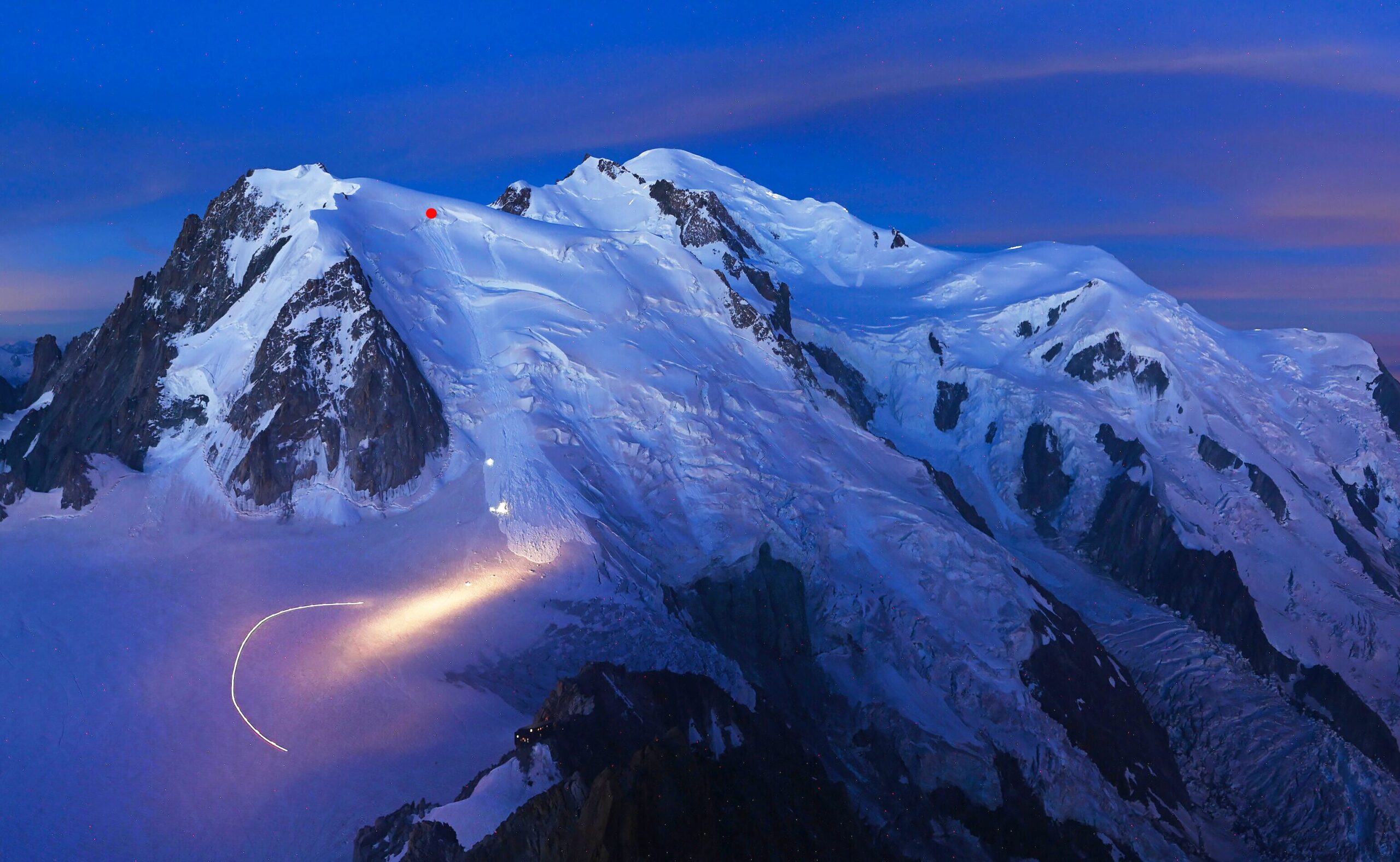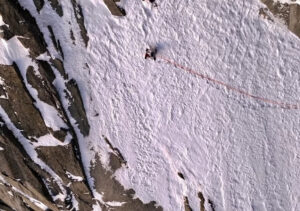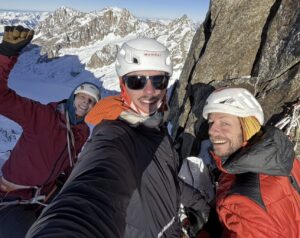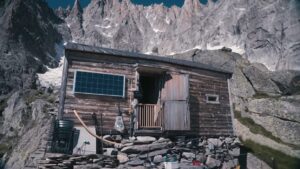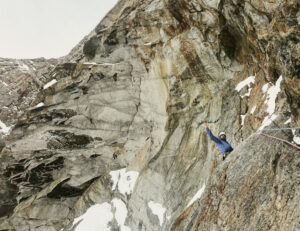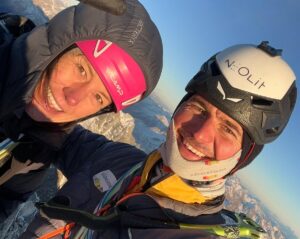Once again this year, a piece of serac fell down Mont Blanc du Tacul, triggering a tragedy during the peak climbing season.
The incident took place at 3 am this morning, August 5, when the chunk of ice fell from the upper part of the peak’s north face. Mont Blanc du Tacul is a part of the Mont Blanc massif, about halfway between the Aiguille du Midi and Mont Blanc itself.
The avalanche reached the Col du Midi and hit a line of climbers on their way up Mont Blanc via the popular Three Peaks (Trois Monts) Route. The slide caught 11 to 15 climbers. One has died, and four are reported injured, one seriously.
Other victims
The identity of the deceased climber was not revealed, although we know he was a 57-year-old French national. He remained on the surface of the avalanche but apparently died from cardiac arrest. A 42-year-old man was brought to the hospital for resuscitation. No further word on his condition. His rope partner, a 40-year-old female, suffered lung injuries and was also hospitalized, BFMTV reported.
A 17-year-old and his father, 58, also needed hospital care. At least four roped pairs of climbers escaped injury and tried to help those in trouble. Search efforts continued this morning for other potential victims. The operation was eventually suspended because of the high risk of further avalanches.
A dangerous spot
This was far from the first tragedy around Mont Blanc du Tacul. Its north side is infamous for frequent avalanches triggered by serac fall. Climbers ascend the mountain via its NNW flank (the so-called Epaule du Tacul). On this section alone, 13 have died between 2000 and 2022, including eight in 2008, two in 2013, and three in 2016.
The route to Mont Blanc then passes through a second avalanche-prone area after the Col Maudit, with nine deaths in 2012 and three in 2016.
The weather in the Alps has been remarkably warm this past week, increasing the risk of falling rocks and ice. Yet serac fall on Mont Blanc du Tacul also happens in cold conditions and at night. French glaciologist Melaine Le Roi noted on X that the area where yesterday’s serac fall took place was not even the most dangerous. Previous incidents tended to happen elsewhere.
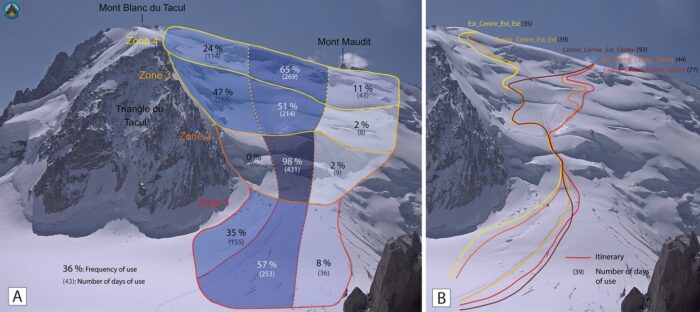
Left: The areas on Mont Blanc du Tacul’s NNW face most frequented by climbers. Right: most common ascent routes. Photos/info from research by Ludovic Ravanel et al.
Risks on Mont Blanc routes
Mont Blanc climbers usually divide between the normal route (the Voie Royale) from Saint-Gervais via the Dôme du Goûter, and the Trois Monts route. The first option includes crossing the dangerous Grand Couloir, known as the Bowling Alley or even the Corridor of Death, because of constant rockfall.
Others choose the longer but more rewarding Trois Monts route. It departs from the Cosmiques mountain hut near the Col du Midi, which is accessible by cable car. The route links three summits over 4,000m: Mont Blanc du Tacul (4,248m) and Mont Maudit (4,465m) on the way to the top of 4,809m Mont Blanc, the highest peak in the European Alps.
In a thorough work for the Journal of Alpine Research last year, Ludovic Ravanel and a team of experts compared the risks of both routes.
The normal Gouter route has a high accident rate with an average of 3.7 deaths per year, their paper states. They estimate that 17,768 people passed the Grand Couloir during the summer of 2019, and seismological instruments registered 2,648 rockfalls.
“The average risk of death associated with these rockfalls, the frequency of which depends on temperatures and the presence of liquid water in the ground, is estimated at 1.7 × 10-4,” they wrote. In other words, the risk of dying on that route is a little under 2 in 10,000.
The researchers went on: “At Tacul (on the Trois Monts route), where an average of 0.6 deaths occur each year, 6,770 passages were recorded during the summer of 2017, as well as 31 serac falls unrelated to temperatures. The risk of death is 8.3 × 10-5.”
Here, in other words, the risk is about half that of the other route, at just under 1 in 10,000.
